

others
EUR/USD hits by US Dollar’s recovery amid risks of prolonged Fed-ECB policy divergence – Crypto News
- EUR/USD comes down slightly to 1.0740 as the US Dollar rises amid a light US economic calendar.
- The ECB is expected to opt for cutting interest rates in June.
- Fed’s Kashkari sees no rate cuts this year due to the strong housing market.
EUR/USD is slightly down to 1.0740 in Wednesday’s early American session. The major currency pair drops as the US Dollar rises as comments from central bank officials become the main market movers in the absence of top-tier economic data in the Eurozone and the United States.
Investors underpinned the Euro against the US Dollar in the past few trading sessions as speculation for the Federal Reserve (Fed) pivoting to interest-rate cuts strengthened due to weak US economic data. However, the Euro struggles to hold strength amid firm expectations that the European Central Bank (ECB) will cut rates before the Fed.
Financial markets see the ECB starting to cut interest rates from the June meeting. Price pressures in the Eurozone economy are on course to return to the 2% target, and service inflation started softening after remaining steady at 4.0% for straight five months. A slew of ECB policymakers remain comfortable with interest rates coming down from June, provided there are no surprises. Also, the ECB is expected to cut interest rates three times this year, more than the Fed, which will widen the policy divergence between both central banks.
Daily digest market movers: EUR/USD drops as US Dollar moves higher
- EUR/USD comes under pressure as the US Dollar rebounds, recovering losses inspired by the Federal Reserve’s less hawkish guidance on interest rates than feared and weak US economic data for April. The US Dollar Index (DXY), which tracks the Greenback’s value against six major currencies, advances to 105.60.
- Last week, Fed Chair Jerome Powell said after the monetary policy meeting that further policy tightening is not in the picture. His comments signalled that he continues to lean towards rate cuts this year. However, Powell acknowledged that progress in the disinflation process appears to be stalling.
- The US Nonfarm Payrolls (NFP) report for April showed that fewer jobs were added in April, and the Unemployment Rate rose to 3.9%. Average Earnings slowed more than expected, which pointed to a softening inflation outlook. The Services PMI fell below the 50.0 threshold, which separates expansion from contraction. The service sector’s output fell to 49.4, missing estimates of 52.0 by a wide margin.
- Contrary to Powell’s intent of remaining hopeful for rate cuts, Minneapolis Federal Reserve (Fed) Bank President Neel Kashkari said on Tuesday that he sees interest rates remaining at their current levels for the entire year. Stalling progress in the disinflation process due to the strong housing market turned Kashkari hawkish on the interest rate outlook.
- The impact of Kashkari’s hawkish guidance on interest rates on speculation for the Fed to start reducing interest rates from the September meeting is expected to remain subdued as he is a non-voting member until 2026. The CME FedWatch tool shows that there is a 65% chance for interest rates to reduce from their current levels in September. The probability of the Fed lowering rates in September has increased from the 53% recorded a week ago.
Technical Analysis: EUR/USD faces stiff barricades near 1.0800
EUR/USD falls after failing to recapture the round-level resistance of 1.0800. The shared currency pair exhibits a sharp volatility contraction due to a Symmetrical Triangle formation on the daily time frame. The upward-sloping border of the triangle pattern is plotted from the October 3 low at 1.0448, and the downward-sloping border is placed from the December 28 high around 1.1140.
The 14-period Relative Strength Index (RSI) oscillates inside the 40.00-60.00 range, suggesting indecisiveness among market participants.
The asset trades above the 20-day Exponential Moving Average (EMA) near 1.0723, suggesting that the near-term outlook is bullish.
Risk sentiment FAQs
In the world of financial jargon the two widely used terms “risk-on” and “risk off” refer to the level of risk that investors are willing to stomach during the period referenced. In a “risk-on” market, investors are optimistic about the future and more willing to buy risky assets. In a “risk-off” market investors start to ‘play it safe’ because they are worried about the future, and therefore buy less risky assets that are more certain of bringing a return, even if it is relatively modest.
Typically, during periods of “risk-on”, stock markets will rise, most commodities – except Gold – will also gain in value, since they benefit from a positive growth outlook. The currencies of nations that are heavy commodity exporters strengthen because of increased demand, and Cryptocurrencies rise. In a “risk-off” market, Bonds go up – especially major government Bonds – Gold shines, and safe-haven currencies such as the Japanese Yen, Swiss Franc and US Dollar all benefit.
The Australian Dollar (AUD), the Canadian Dollar (CAD), the New Zealand Dollar (NZD) and minor FX like the Ruble (RUB) and the South African Rand (ZAR), all tend to rise in markets that are “risk-on”. This is because the economies of these currencies are heavily reliant on commodity exports for growth, and commodities tend to rise in price during risk-on periods. This is because investors foresee greater demand for raw materials in the future due to heightened economic activity.
The major currencies that tend to rise during periods of “risk-off” are the US Dollar (USD), the Japanese Yen (JPY) and the Swiss Franc (CHF). The US Dollar, because it is the world’s reserve currency, and because in times of crisis investors buy US government debt, which is seen as safe because the largest economy in the world is unlikely to default. The Yen, from increased demand for Japanese government bonds, because a high proportion are held by domestic investors who are unlikely to dump them – even in a crisis. The Swiss Franc, because strict Swiss banking laws offer investors enhanced capital protection.
-

 Cryptocurrency1 week ago
Cryptocurrency1 week agoSolana Price Upside Prevails After Securing Key Support, $127 In Focus – Crypto News
-
Cryptocurrency5 days ago
Pi Community Highlights Pi Coin’s Slow Growth As ‘Strategic’ – Crypto News
-
Business4 days ago
Cardano (ADA) and Dogecoin (DOGE) Eye For Bullish Recovery – Crypto News
-

 Business4 days ago
Business4 days agoWorldpay and FIS Deals Echo 2019’s Payments Megamergers – Crypto News
-

 Blockchain16 minutes ago
Blockchain16 minutes agoOn-Chain Tokenization for Payments Professionals – Crypto News
-

 Technology1 week ago
Technology1 week agoMicrosoft’s Greatest Hits and Epic Fails: A 50-Year Wild Ride – Crypto News
-

 others1 week ago
others1 week agoThere is more work to do on inflation – Crypto News
-

 Cryptocurrency1 week ago
Cryptocurrency1 week agoProfessor Coin: What’s Driving Cryptocurrency Adoption Around the World – Crypto News
-
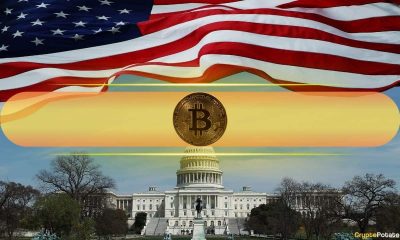
 Cryptocurrency6 days ago
Cryptocurrency6 days agoWhite House Mulls Bitcoin Reserve Backed by Gold and Tariffs – Crypto News
-

 Cryptocurrency1 week ago
Cryptocurrency1 week agoDOGE Price Moves as Dogecoin Whales Go on Buying Spree – Crypto News
-

 Blockchain1 week ago
Blockchain1 week agoHow to mine Bitcoin at home in 2025: A realistic guide – Crypto News
-

 Blockchain1 week ago
Blockchain1 week agoCZ claps back against ‘baseless’ US plea deal allegations – Crypto News
-

 Technology1 week ago
Technology1 week agoApple ramps up India production amid China uncertainty, assembles $22 billion worth iPhones in a year – Crypto News
-
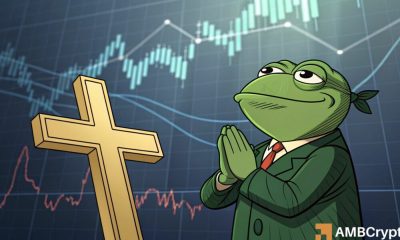
 Cryptocurrency1 week ago
Cryptocurrency1 week agoPepe is on the verge breakout to $0.0000078 as gold cross nears. – Crypto News
-

 others1 week ago
others1 week agoGold consolidates near all-time peak as bulls pause for breather – Crypto News
-

 Cryptocurrency5 days ago
Cryptocurrency5 days agoOKX Returns to US Market Following $505M DOJ Deal – Crypto News
-

 Blockchain4 days ago
Blockchain4 days agoBitcoin online chatter flips bullish as price chops at $85K: Santiment – Crypto News
-
Technology3 days ago
Expert Predicts Pi Network Price Volatility After Shady Activity On Banxa – Crypto News
-

 Technology1 week ago
Technology1 week agoHow to transcribe and translate YouTube videos for free using Gemini 2.5 Pro? Check our step-by-step guide – Crypto News
-

 others1 week ago
others1 week agoBinance Issues Important Update On 10 Crypto, Here’s All – Crypto News
-

 Blockchain1 week ago
Blockchain1 week agoXRP Price To Hit $45? Here’s What Happens If It Mimics 2017 And 2021 Rallies – Crypto News
-

 others1 week ago
others1 week agoRipple Community Remains Disappointed With Hinman Report, What’s Next? – Crypto News
-

 Cryptocurrency1 week ago
Cryptocurrency1 week agoBitcoin – Here’s what’s next after sellers near exhaustion levels – Crypto News
-

 others1 week ago
others1 week agoOn-Chain Indicator Suggests Ethereum (ETH) Could Be Undervalued, According to Crypto Analyst – Crypto News
-

 others1 week ago
others1 week agoMexican Peso ends week strong as USD plunges on China tariff retaliation – Crypto News
-
![Shiba Inu [SHIB] price prediction - A 70% rally next after 900%+ burn rate hike?](https://dripp.zone/news/wp-content/uploads/2025/04/Shiba-Inu-SHIB-price-prediction-A-70-rally-next-400x240.png)
![Shiba Inu [SHIB] price prediction - A 70% rally next after 900%+ burn rate hike?](https://dripp.zone/news/wp-content/uploads/2025/04/Shiba-Inu-SHIB-price-prediction-A-70-rally-next-80x80.png) Cryptocurrency1 week ago
Cryptocurrency1 week agoShiba Inu [SHIB] price prediction – A 70% rally next after 900%+ burn rate hike? – Crypto News
-

 Metaverse1 week ago
Metaverse1 week agoForget DeepSeek. Large language models are getting cheaper still – Crypto News
-

 others1 week ago
others1 week agoCrypto Strategist Sees Solana-Based Memecoin Surging Higher, Says One AI Altcoin Flashing Strong Chart – Crypto News
-

 Blockchain7 days ago
Blockchain7 days agoOn-Chain Clues Suggest Bitcoin Bounce Might Be a False Signal—Here’s What to Know – Crypto News
-

 Cryptocurrency5 days ago
Cryptocurrency5 days agoA decade in, Liberland needs the Bitcoin standard more than ever – Crypto News
-
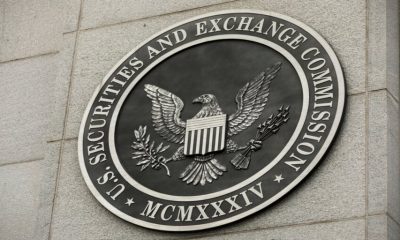
 Cryptocurrency4 days ago
Cryptocurrency4 days agoJudge Pauses 18-State Lawsuit Against SEC, Saying It Could ‘Potentially Be Resolved’ – Crypto News
-
Business4 days ago
Coinbase Reveals Efforts To Make Its Solana Infrastructure Faster, Here’s All – Crypto News
-
Technology4 days ago
Coinbase Reveals Efforts To Make Its Solana Infrastructure Faster, Here’s All – Crypto News
-
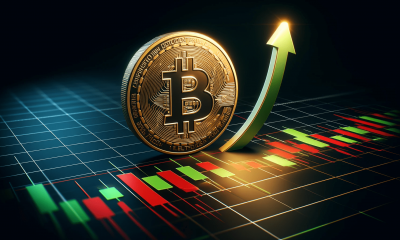
 Blockchain1 week ago
Blockchain1 week agoBitcoin Poised For W-Bottom Reversal, Says John Bollinger – Crypto News
-

 Technology1 week ago
Technology1 week agoDogecoin Price Gearing for A 3X Rally Amid DOGE Whale Accumulation – Crypto News
-

 Cryptocurrency1 week ago
Cryptocurrency1 week agoFusaka fork takes shape as Pectra enters final stretch – Crypto News
-

 Technology1 week ago
Technology1 week agoPrice drop on 43 inch TVs: Grab the best deals on Samsung, Sony, Xiaomi and more, up to 57% off – Crypto News
-
![Bearish sequence in Nifty favors downside [Video]](https://dripp.zone/news/wp-content/uploads/2025/02/Bearish-sequence-in-Nifty-favors-downside-Video-Crypto-News-400x240.png)
![Bearish sequence in Nifty favors downside [Video]](https://dripp.zone/news/wp-content/uploads/2025/02/Bearish-sequence-in-Nifty-favors-downside-Video-Crypto-News-80x80.png) others1 week ago
others1 week agoDow Jones recovers ground to post one of its best weeks in years – Crypto News
-

 Blockchain1 week ago
Blockchain1 week ago‘Bitcoin Standard’ author to develop Austrian economics curriculum for UK school – Crypto News
-

 Business1 week ago
Business1 week agoMichael Saylor Hints At Another MicroStrategy Bitcoin Purchase, BTC Price To Rally? – Crypto News
-

 others6 days ago
others6 days agoChina’s Copper imports drop – ING – Crypto News
-

 others5 days ago
others5 days agoPresident Trump Planning Launch of New Monopoly-Inspired Crypto Game: Report – Crypto News
-
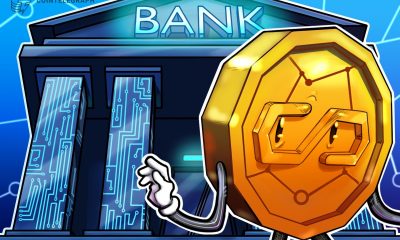
 Blockchain5 days ago
Blockchain5 days agoStablecoins’ dominance due to limitations of US banking — Jerald David – Crypto News
-

 Technology5 days ago
Technology5 days agoIndia, Australia explore bilateral data-sharing treaty to tackle cybercrime – Crypto News
-
Business4 days ago
Crypto Whales Bag $20M In AAVE & UNI, Are DeFi Tokens Eyeing Price Rally? – Crypto News
-

 Blockchain4 days ago
Blockchain4 days agoJio partnership to drive real-world Web3 adoption for 450M users – Crypto News
-

 Metaverse4 days ago
Metaverse4 days agoLe Chat, the cat-bot France has pinned its AI hopes on – Crypto News
-
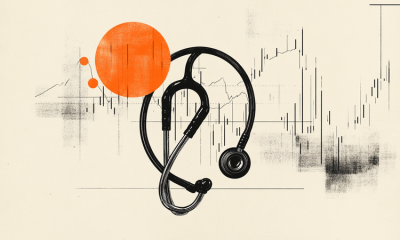
 others4 days ago
others4 days agoUnitedHealth stock caves 23% as it cuts full-year guidance – Crypto News
-
others4 days ago
Coinbase Reveals Efforts To Make Its Solana Infrastructure Faster, Here’s All – Crypto News
-
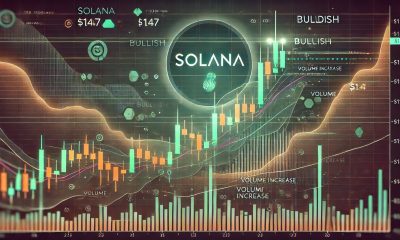
 Blockchain4 days ago
Blockchain4 days agoSolana Turns Bullish On 8H Chart – Break Above $147 Could Confirm New Trend – Crypto News












